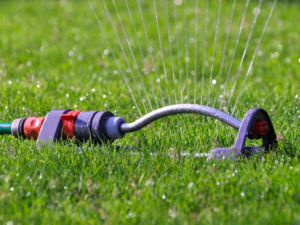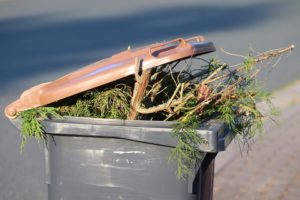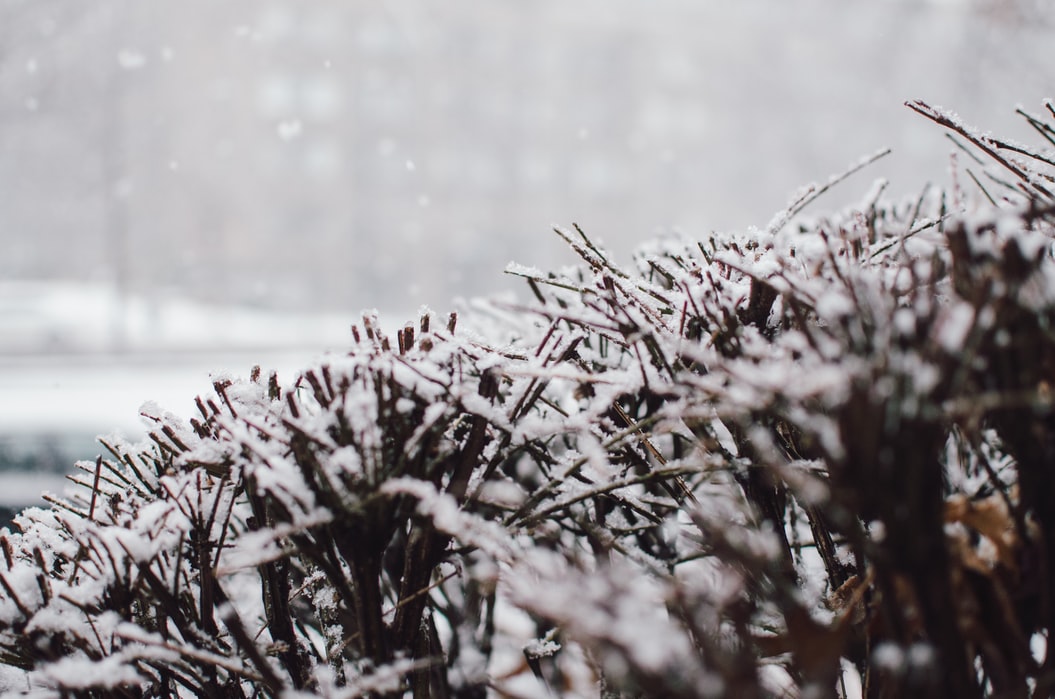It may seem awful to think about the months of bitter cold and snow ahead of us, but here at Alex’s Lawn & Turf, we always look ahead to the sunny days and green lawns! Whether it’s fall or spring, there’s always something you can do to ensure your lawn’s tip-top health.
Wintertime Effects On Home Greenery
Winter is a taxing time for shrubs and trees in our climate. Cold temperatures damage the extremities of the plants, and desiccating winds pull water out of the trees (especially evergreens), causing winter burn and tip die-back. Additionally, excessive sun exposure can damage trees and bushes as well.
In order to get your lawn and landscape ready for winter there are a few specific things to remember. Here are our top 3 tips for winterizing your home’s lawn!
 1. Prevent Winter Damage
1. Prevent Winter Damage
Preventing winter damage to your lawn and landscape can be a heavy task because of all of the potential dangers. For example, extreme sunlight exposure can cause sunscald, which occurs when the sun shines on the bark, causing it to warm, and then the temperature of the bark suddenly drops when the sun sets or even goes behind a cloud.
To prevent sunscald, wrap the bark of young trees and plants with a tree wrap, the popular grow tubes, or just a light material that will reflect warming light away from the plant.
Preventing die-back and winter burn is more complex, as there are many aspects of a northern winter that can cause these problems. However, there are also many things we can do to ease them. First: watering. In the winter, the ground is frozen, and the roots cannot take up any water, but plants can certainly lose water to the transpiration that occurs from the cold winds.
The best way to prepare them for winter is to make sure they are getting thoroughly watered into the fall (ideally until both soil and air temperatures are below 50 degrees). This will ensure that the plant has as much moisture as it can as it enters dormancy.
2. Do Not Prune 
Second, there are a couple things to AVOID doing too late in the fall – namely pruning and fertilizing. Winterburn and die-back occur most often on young growth. Late pruning and fertilizing encourage growth, and can sometimes even “confuse” a plant by overriding its triggers that are telling it to go into dormancy. Pruning too late in the fall – when the plant has stopped active growth – often means the plant will not callus over, leaving an open wound all winter that is susceptible to desiccation.
3. Fertilize Your Lawn
While the previous paragraph noted the dangers of fertilizing, it’s not an entirely bad idea! Applying a fertilizer in early fall can be very helpful by encouraging the right kind of growth (namely root growth), or by giving the plant a lot of nutrients to take up and store. In the fall, for example, grass benefits greatly from a fall fertilizer, as the blades slow their growth in the cool air, but the roots continue to grow in the warm soil. During this time, the fertilizer helps prepare each little grass plant by giving it the nutrients it needs to burst back to life as soon as the winter has passed.
—
While there aren’t a ton of steps to completing lawn winterization, the exact method of completing these tasks may require a bit of industry knowledge and finesse. If you’re looking to protect your lawn and landscaping over this coming winter season, contact the lawn professionals at Alex’s Lawn & Turf today!

